022. Web 2.0 Expo 2007
by Richard MacManusMy trip to Silicon Valley for the inaugural Web 2.0 Expo in April 2007, where I meet several Read/WriteWeb colleagues for the first time and enjoy the expanding tech bubble.
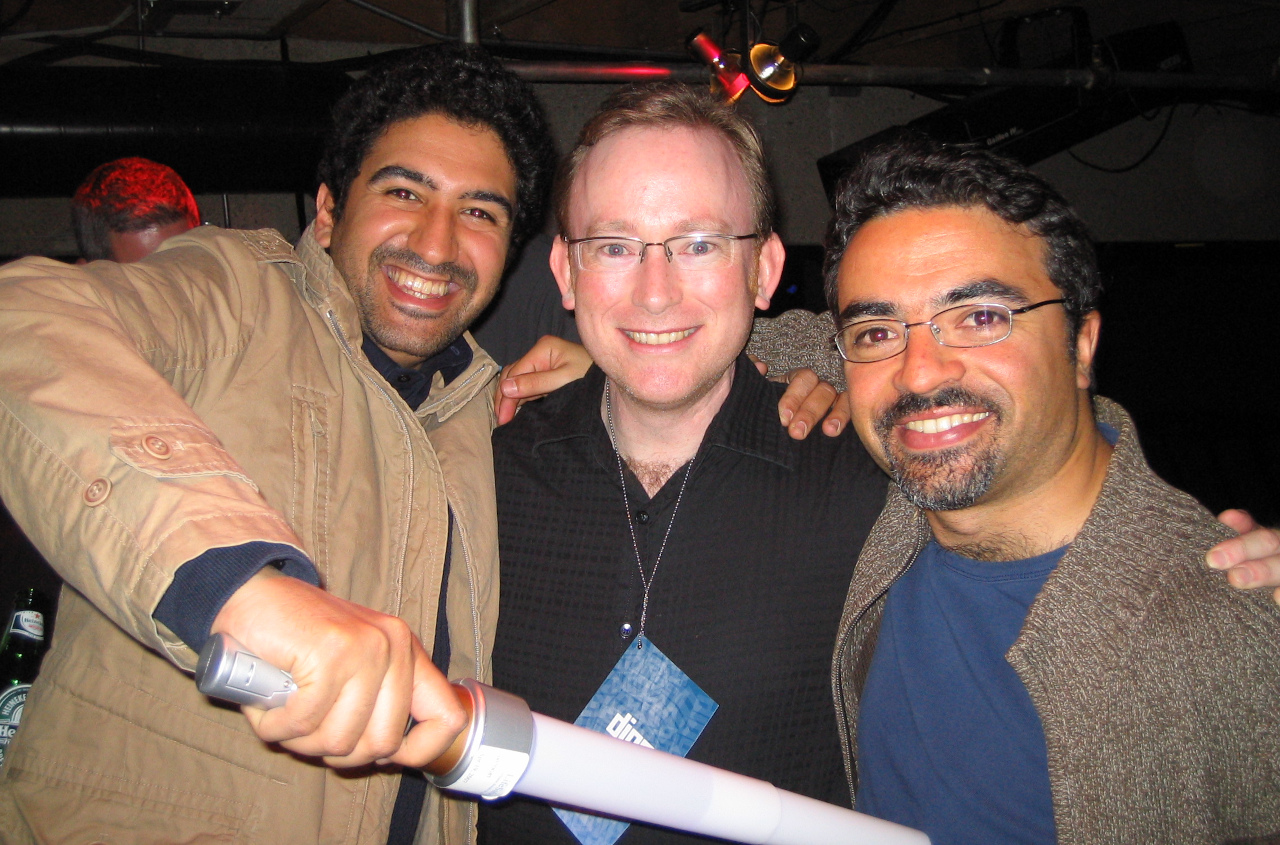
In April 2007, I traveled back to San Francisco for the first Web 2.0 Expo, which was being pitched as a trade show. I arrived on Friday, April 13. I would be moderating a panel at the event, entitled “The New Hybrid Designer,” and I suggested the panelists meet to discuss what exactly a “hybrid designer” is supposed to be. We arranged to have dinner on Friday evening at an Indian restaurant called Chaat Café on Third Street. I brought along my Irish friend Fergus Burns, who had also just gotten into San Francisco that day.
Also at the dinner were Emily Chang (who was in the Web 2.0 Workgroup, although that was basically defunct by this point), Kelly Goto, Chris Messina, and Jeremy Keith—all of us in our twenties or thirties. Other than Fergus, I knew Emily and Chris the best. I wasn’t friends with them, but both were familiar faces on the Web 2.0 conference circuit. They were also representative (at least to me) of two different social groups in our little scene. Chris was at the center of a young, hip, developer-focused crowd that was attracted to Web 2.0 as a golden opportunity to create a more open, decentralized web than we’d had in the nineties and early aughts. Emily, a web designer by trade, seemed less interested in the “flower power” aspects of Web 2.0 and more focused on making a professional name for herself. Both had business interests in Web 2.0, of course, but they pursued them in different ways.
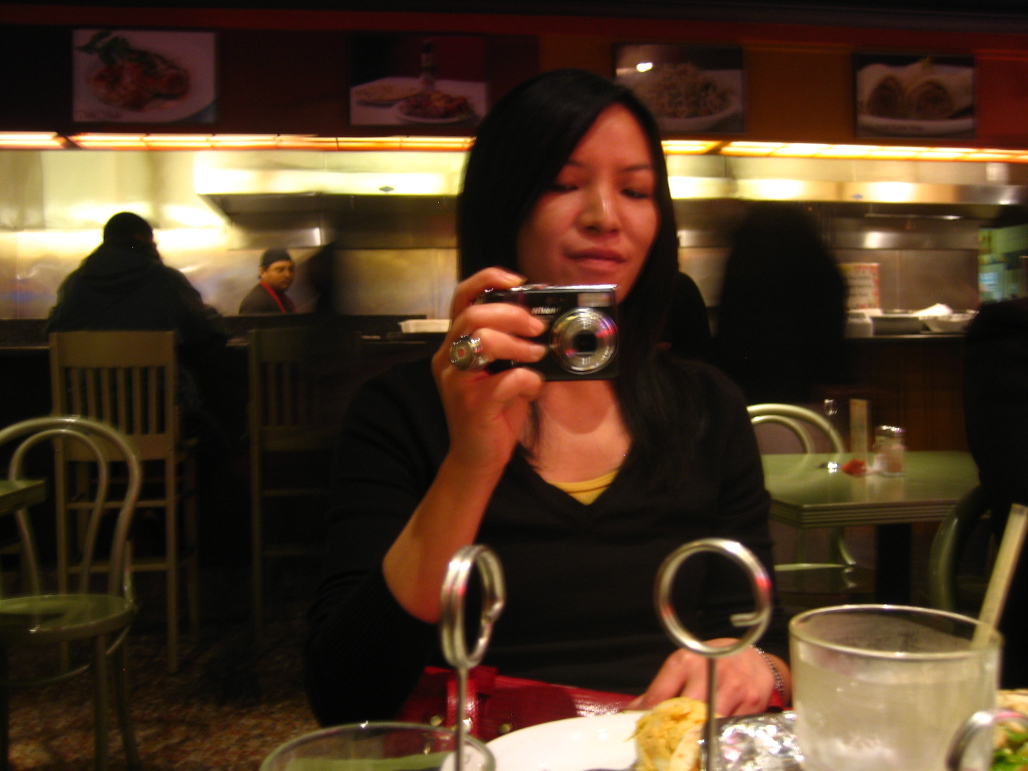
Emily Chang at the pre-panel dinner; photo by Jeremy Keith.
Chris and his then girlfriend, Tara Hunt, were the Brad and Angelina of Web 2.0. Together they’d started up a web consultancy called Citizen Agency, and they were popular, extroverted personalities in the internet industry. The pair also organized a kind of conference-within-a-conference at Web 2.0 Expo: called Web2Open, it was a free event where developers and designers discussed the tech issues of the day.
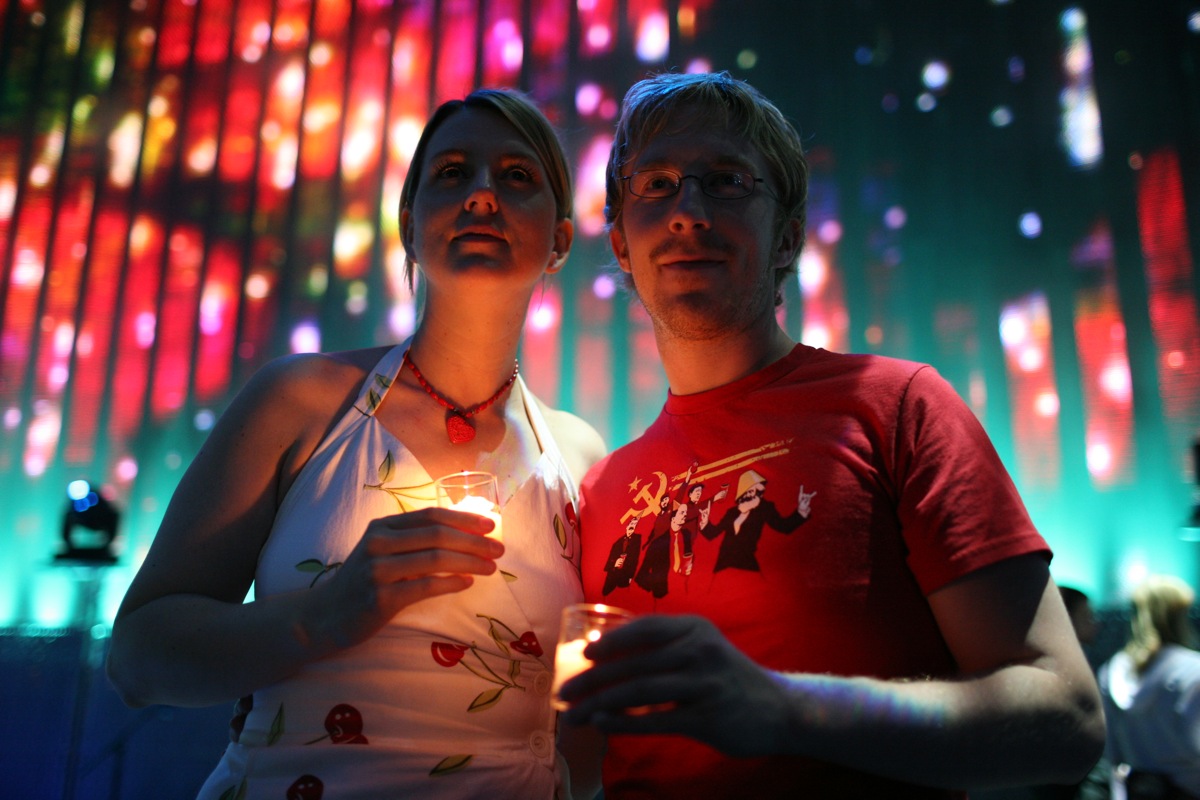
Chris and Tara in July 2006; photo by Scott Beale / Laughing Squid.
Although he was neither a startup founder nor a developer, Chris went to all the Silicon Valley events and parties. Ever since I’d met him, in around 2005, it felt like he was searching for his claim to internet fame. He would stumble onto it several months after that dinner. A “microblogging” app called Twitter had only just started to ramp up in 2007, so the design patterns for using it were still being worked out. In an August 2007 tweet, Chris suggested that Twitter use the pound sign to signify a keyword. This suggestion got picked up by other Twitter users and then by the company itself. Soon it became common practice, giving Chris the excuse to call himself “the inventor of the hashtag” for the rest of time.
Emily was also cool, but in a more reserved way. She and her partner Max Kiesler ran a design agency in San Francisco called Ideacodes. If Chris and Tara were the partygoing popular couple of the Web 2.0 scene, Emily and Max were the quietly chic, gallery-hopping couple. They were ambitious, just like Chris and Tara, but they were less focused on opening up the world and more interested in capturing value in one part of it: the design profession.

On stage for the Hybrid Designer panel; from left to right: Jeremy Keith, me, Kelly Goto, Chris Messina; photo by Chris.
The Web 2.0 Expo turned out to be an interesting mix of technologists and businesspeople. Both types turned up in spades. When the conference officially kicked off on Sunday, my first impression was of how large this event was. It was being held in the spacious Moscone Center, and there was no shortage of attendees to fill up those spaces. Even the press room was full from day one; at times journalists and bloggers were turned away. The signage inside the conference venue was also overwhelming—huge lime-green and azure-blue signs everywhere. Mostly they were banners with the Web 2.0 Expo branding on them, but giant session schedules also loomed over you as you walked the floors. Even the electronic Twitter board had a lime-green background.
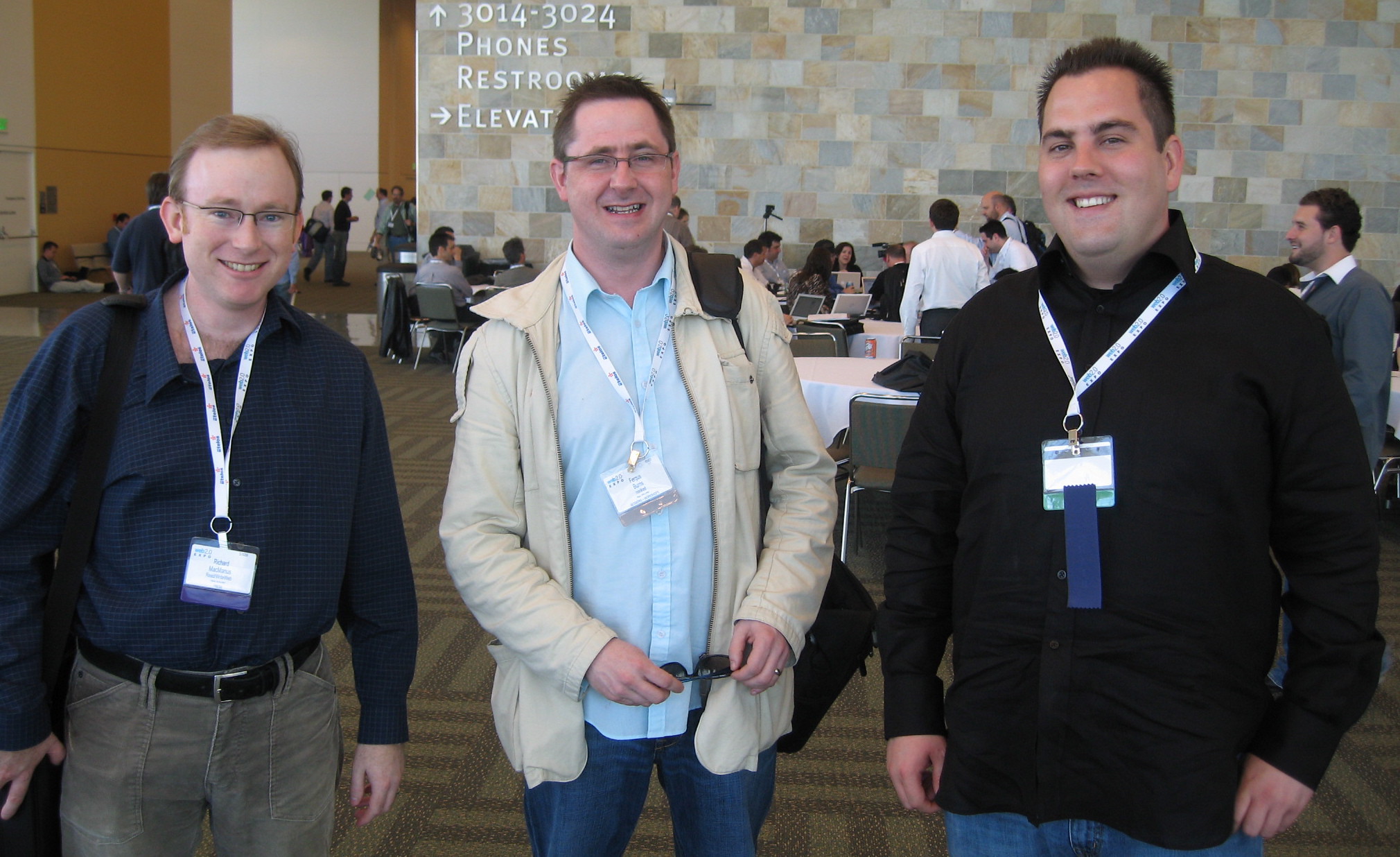
The “Irish geek mafia” — Me, Fergus Burns, Niall Kennedy; photo by Dave McClure.
Somehow, I got into the press room, which is where I bumped into Anil Dash. He worked at Six Apart, maker of the blogging platform I used: Movable Type. “This is the biggest Web conference I’ve been to since the late nineties,” he remarked as we sat down for a chat.
An Indian American man with a goatee and close-cropped hair, Anil was wearing a pink button-down with a black blazer that day. This typified his relaxed yet self-assured style. Even though Anil was four years younger than me, it felt like I was talking to an older brother. He had been a blogger since 1999 and was a consummate insider in the valley, despite identifying as a New Yorker (he’d briefly moved to San Francisco in 2004 for his job, but by 2007 he and his wife were back in New York). He was not only an expert blogger, but an expert communicator too. He seemed to have an innate ability to form close connections to the people he met in the technology industry—an attribute that I sadly lacked.
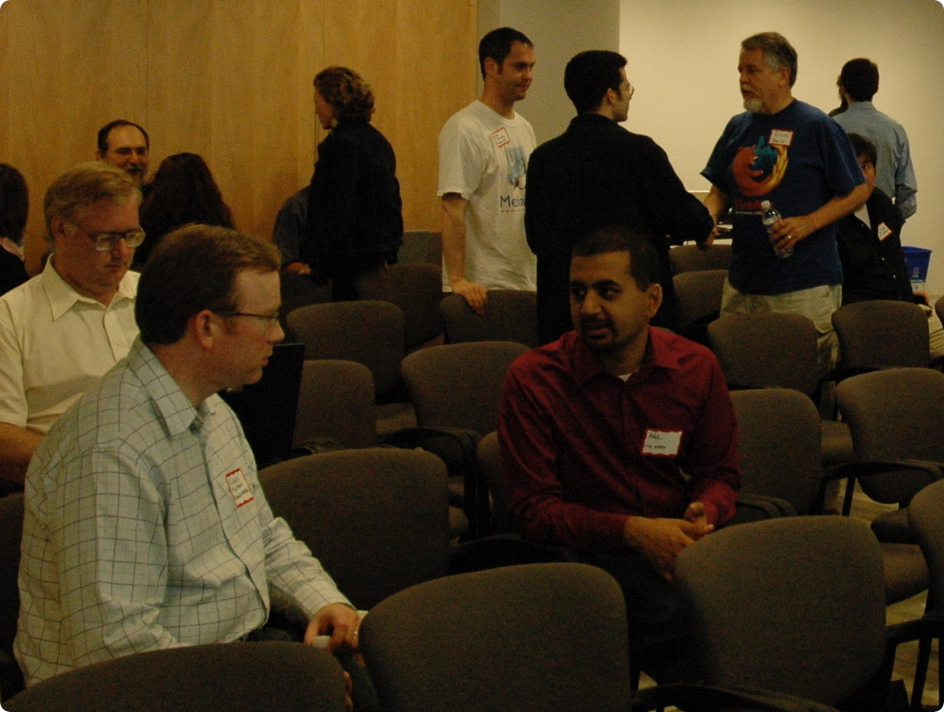
Anil Dash (on right) and me chatting at BloggerCon, June 2006; photo supplied to the author by Paolo Valdemarin.
I was still trying to figure out how to grow RWW, so I was keen to pick Anil’s brain. He suggested that I differentiate from TechCrunch and defocus on startups. Explore the “categories of innovation,” he said, adding that I should be thinking about how my blog can have longevity. He was one of the people at that time who thought Web 2.0 was a bubble that would inevitably burst, so he said it was important for me to continue with my analytical approach—to write quality content that stands the test of time. He also mentioned subscriptions as a possible alternate business model, citing John Gruber’s Apple-focused blog Daring Fireball as an example. This was years before subscriptions became a widespread form of revenue for internet scribes, but it showed how forward-thinking Anil was: he wanted me to see past the shiny sponsored objects of Web 2.0. People whose time is valuable will pay for quality content, he assured me. It was sage advice, but I only had eyes for advertising revenue at that time.
Unsurprisingly, Anil had started using Twitter before me—his account started in December 2006, back when you had to know people in the valley to even know it existed. The first real wave of people joined Twitter in March 2007, after it became the trendy app at the annual SXSW conference in Austin, Texas. I joined as soon as I arrived in San Francisco that April. I don’t recall who told me about it, but I signed up on Saturday, the day before Web 2.0 Expo started. My first tweet was a complaint about a squatter taking the “readwriteweb” username (I had signed up instead as @RWW). My second tweet was more descriptive: “checking out web 20 expo schedule. getting ready to join Fergus at Colibri Mexican Bistro—438 Geary St at 7.30. Then drinkies afterwards.”
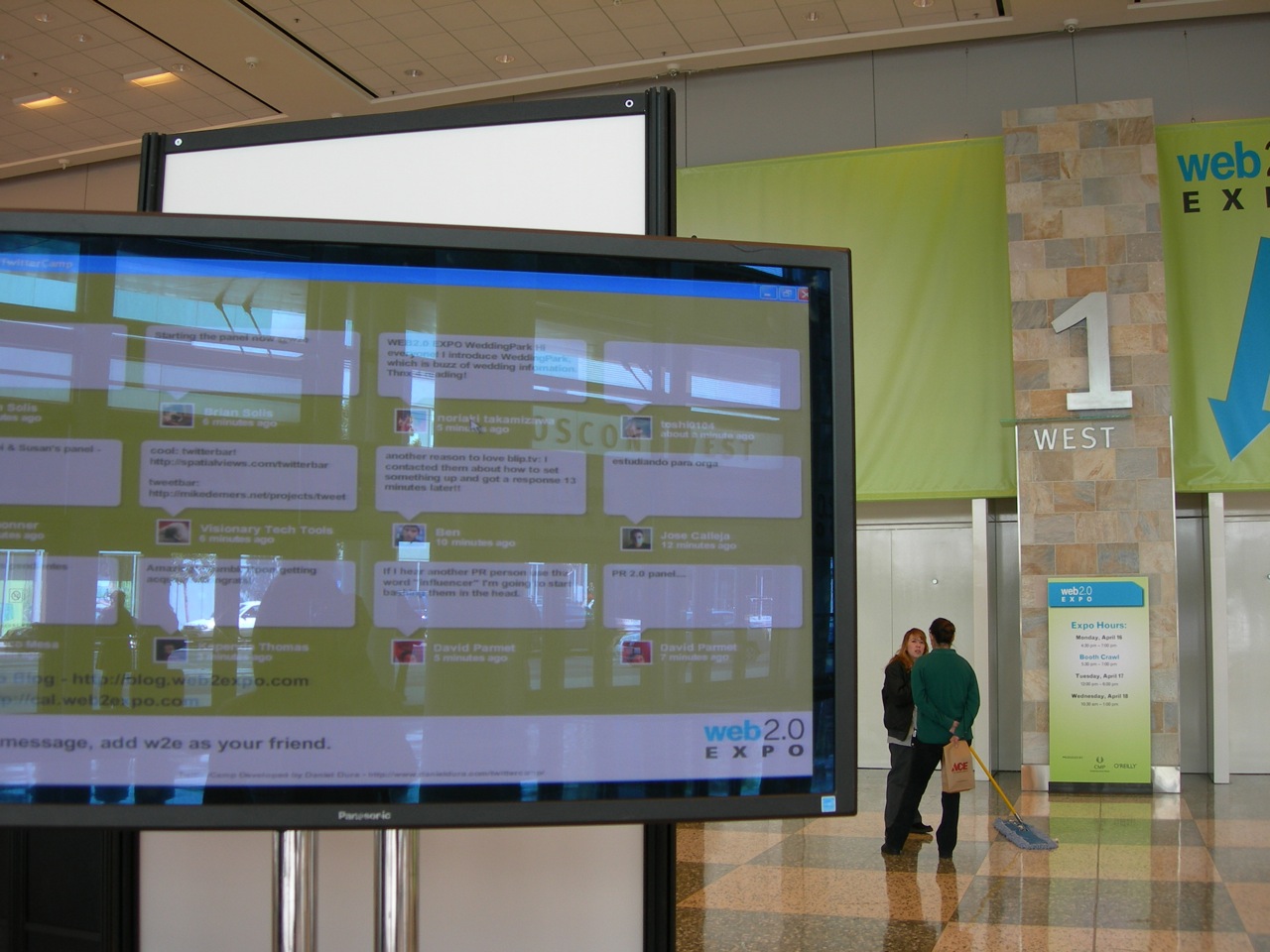
The digital Twitter board at Web 2.0 Expo; photo by Emily Chang.
Those two tweets tell you all you need to know about Twitter in those days: you were either complaining about something or telling the world what you were eating. Twitter was so new back then, neither the technologists nor the businesspeople had any idea how to use it—or what its purpose was.
One of the things I was most looking forward to at Web 2.0 Expo was meeting some of my fellow ReadWriteWebers. Alex Iskold and Emre Sokullu would be there—though they’d been contributors since the second half of 2006, I hadn’t yet met them in person. Several other new contributors were coming to the event, but the one I was most keen to meet was Sean Ammirati. Sean had begun posting on RWW while at SXSW in Austin the previous month, sending nine reports from the event and quickly proving the value of his work. Within a few years, Sean would be my chief operating officer, but at this stage he was working on biz dev for a startup called mSpoke.
Sean was about to turn twenty-seven years old—roughly nine years younger than me. He’d gotten into San Francisco, from his home in Pittsburgh, late on Sunday night. We met on Monday, sometime after my morning hybrid-designer panel. In person he looked the part of a young wannabe startup founder: tidy black hair, thin rectangular glasses, dark blue jeans, sky-blue button-down, and black suit jacket. He was lean and a bit taller than me, and had attentive dark brown eyes.
The email communications I’d had with Sean over March had suggested an eagerness in his character and a willingness to help and “learn by doing” (a common startup ethic). This all came through in person too, especially given his fresh-faced, youthful appearance. But I also noted a keen intelligence about him when it came to discussing the business of Web 2.0—almost an air of superiority. He’d been a research fellow at Carnegie Mellon University in Pittsburgh, one of the leading computer science colleges in the States. He told me in that first meeting that he wanted to become a venture capitalist, and I believed he would get there. For now, I was happy to listen to his theories about online advertising and scaling a startup, and he was just as curious to learn about my practical experience building a tech-blogging business.
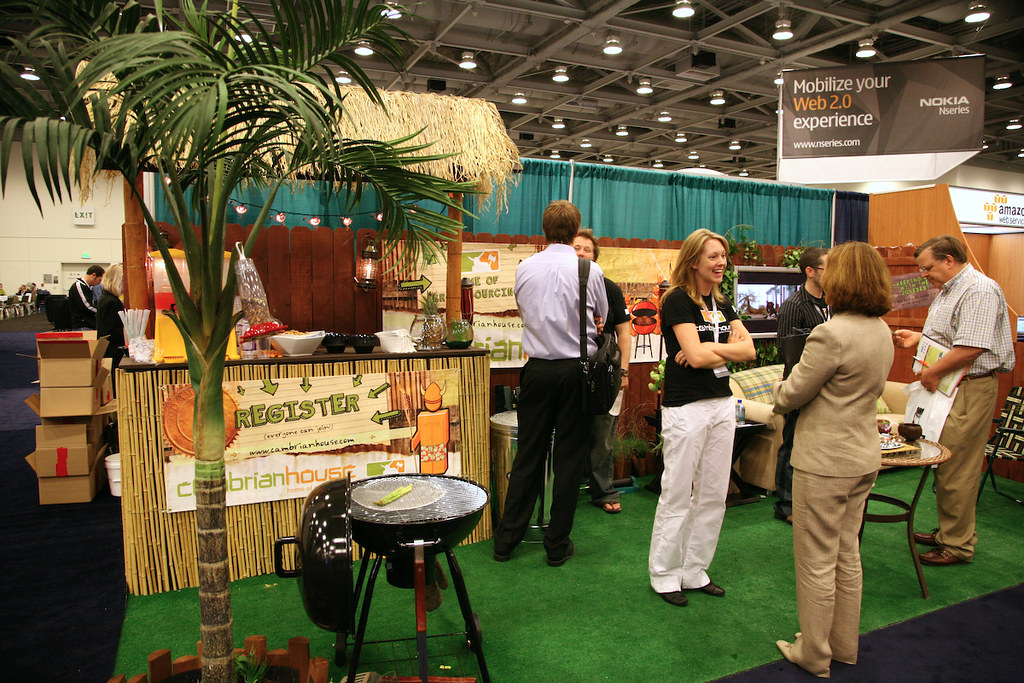
The expo hall; photo by Scott Beale / Laughing Squid.
Web 2.0 Expo was a hectic conference, and it was difficult to meet up with the other RWWers because we were all going to different sessions or having meetings. But I eventually caught up with Alex. In person he reminded me of a chess grandmaster, with his thick Ukrainian accent, sturdy frame, and large head with dark brown unibrow. He’d been in a lot of meetings at the event, drumming up interest in his startup, AdaptiveBlue. I admired Alex for both his prodigious intelligence (very much on display in his RWW articles) and his business hustle. I wished I was even half as effective as Alex at networking, but then again, he did live in New York and traveled regularly to the valley. Even though his accent suggested he was an outsider, I was much more so because I only visited the United States two or three times a year. Plus, I was still too shy and reticent to approach people at events. Fortunately, I had RWW to do my talking for me, so people generally approached me at these gatherings.
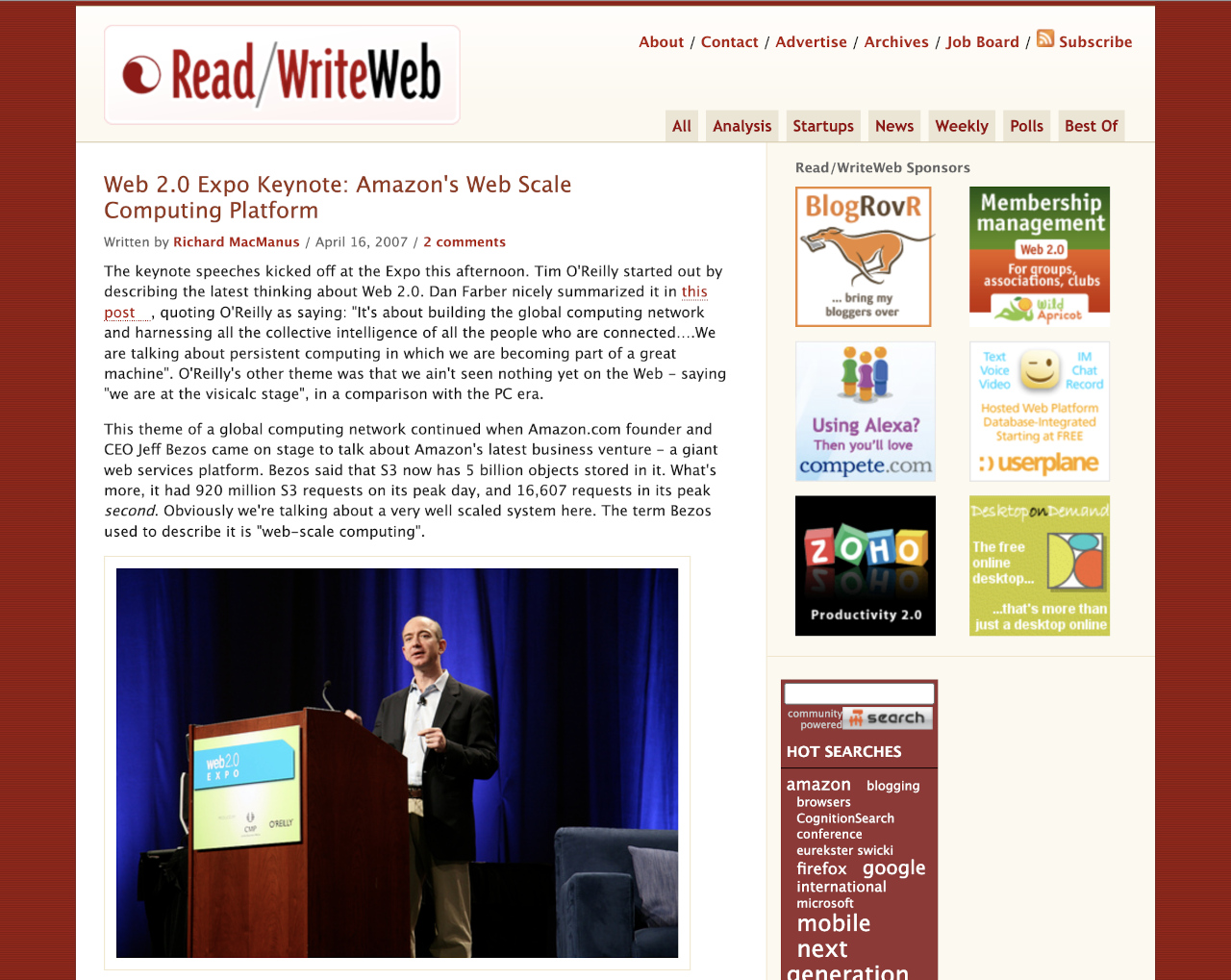
RWW post from Web 2.0 Expo.
I saw Emre at the Ignite session at the end of the first day. Ignite was run by Brady Forrest, who had run the Microsoft Search Champs event I’d attended and now worked for O’Reilly Media. In this session entrepreneurs and developers did short five -minute presentations about their startups or tech passions. It was entertaining. One of the presenters was Justin Kan, who wore a movie camera on his head as part of his ongoing mission to live stream his own life. The result was called Justin.tv, which in later years turned into a business called Twitch.
Emre was a thin, nervous young man in his early twenties, and he didn’t speak a lot of English—a challenge at the time, though we would eventually develop a friendship that endured through the years. He’d immigrated from Turkey in mid-2005 and was trying to gain permanent residency. I knew him to be a smart, innovative programmer who was also passionate about open source—a great combination in Silicon Valley during Web 2.0—so I was sure he’d eventually get his green card. His startup, Grou.ps, seemed to be gaining a bit of traction too—it had launched in 2006 and claimed to have more than thirty-two thousand members by April 2007. Grou.ps was a DIY social networking tool, so it was in the same market as Marc Andreessen’s Ning.

Jennifer Pakula and Brady Forrest, on-stage at Web 2.0 Expo; photo by Scott Beale / Laughing Squid.
Later in the week, Brady organized and kindly invited me to a group dinner at Minako in San Francisco. The list of attendees was a who’s who of Web 2.0 developers: Blaine Cook (Twitter founding engineer), Simon Willison (cocreator of a Python framework called Django), Cal Henderson of Flickr (who later cofounded Slack), Jane McGonigal (a game designer and later a successful author), David Recordon (then at Verisign, but he went on to become a senior engineer at Six Apart and then Facebook), and a whole bunch of other industry people whom I admired. I brought along Alex and Emre, as well as a new acquaintance, Taewoo Danny Kim from South Korea.
I don’t recall having deep conversations with anyone outside of my core group of fellow international citizens, but just being at this dinner made me feel like I wasn’t an outsider anymore. I still didn’t feel like an insider, either, but I was at least insider adjacent.
The fact was, Web 2.0 was booming in mid-2007—and if there was a bust coming, it wasn’t apparent to any of us. The hype of the new web was at an all-time high; this was cemented in my mind when I saw the IBM booth on the Web 2.0 Expo trade floor. It featured IBM staff milling around in red shirts—not IBM blue—and doing on-the-spot classroom sessions with microphones and videos. This was effective at pulling in the punters, I noted, as I watched people plop themselves into the IBM chairs to learn about Web 2.0 technologies.
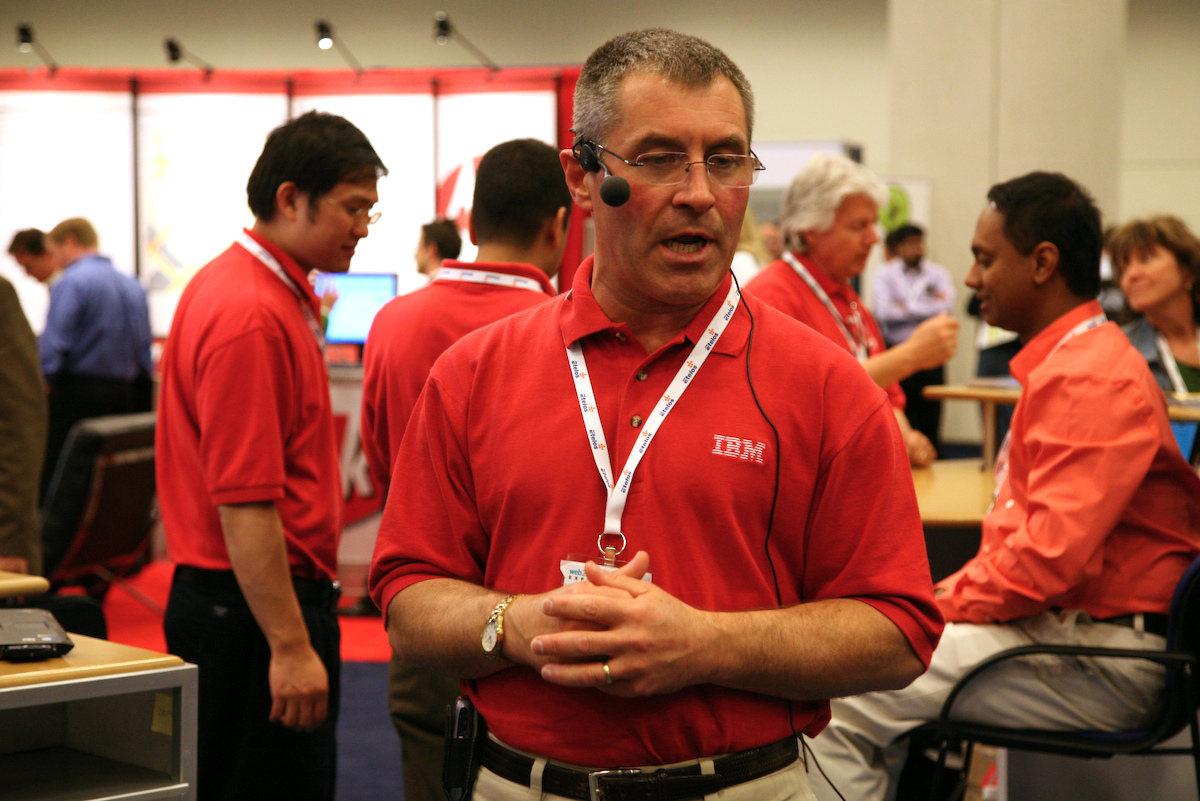
IBM at Web 2.0 Expo. Photo by Scott Beale / Laughing Squid.
As a fellow blogger quipped to me, “I don’t go to Web 2.0 conferences to listen to IBM.” Me neither, but it did confirm two things: one, we had the attention of enterprises and their IT departments; and two, Web 2.0 was now mainstream.
Lead image: Digg party at the Web 2.0 Expo, April 2007: Tariq Krim, me, Ouriel Ohayon; photo via Ouriel.
This post is part of my serialized book, Bubble Blog: From Outsider to Insider in Silicon Valley’s Web 2.0 Revolution. View table of contents.
Next up: 023. Las Vegas and the MIX Conference 2007
Support Cybercultural
Cybercultural is a free newsletter, but you can also become a premium subscriber for £5 per month or £48 per year. Paid subscribers will receive the occasional bonus post, plus a thank-you mention in the paperbook book version of Bubble Blog.